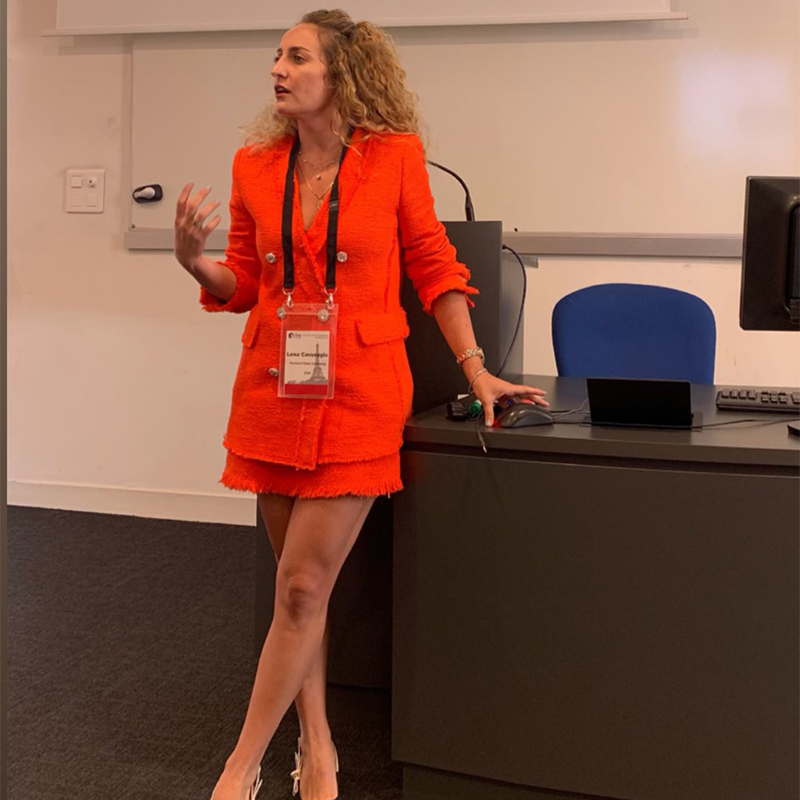A Call for Diversity and Inclusion: Examining Fashion Experiences of Minority Women |
Jul 11, 2019 |
|
 I presented my research paper A Call for Diversity and Inclusion: Examining Fashion Experiences of Minority Women at 2019 Global Fashion Management Conference, which was held in Paris, France between July 11-14, 2019.
I presented my research paper A Call for Diversity and Inclusion: Examining Fashion Experiences of Minority Women at 2019 Global Fashion Management Conference, which was held in Paris, France between July 11-14, 2019.
ABSTRACT
Fashion Spot’s (2017) diversity report announced that Spring 2018 was the season of diversity by examining New York, London, Milan, and Paris runway shows and presented the statistics that 27.9 percent of models were women of color while 72.1 percent model cast was white. The same report revealed that the appearance of plus-size models, models over age 50, transgender or non-binary models were 2.2%, 3.0%, 1.3%, respectively. Although efforts to be inclusive on runways by acceptance of difference undeniably raised in recent years in an attempt to break the substantial homogeneity of the fashion industry, these efforts could not go further than the possibility of only acknowledgment and, thus, the limited representation of a very narrow segment of women in these groups.
Prior research emphasized how underrepresentation in fashion industry creates a burden on women, measuring their self-worth with the ideal standards of beauty (e.g. Scaraboto &Fischer, 2013, Polivy & Herman, 2004). This burden gets even heavier for women from different ethnic, racial, religious, or cultural backgrounds and women in different age groups, socioeconomic classes, and physical ability to name a few. Therefore, since, there is no holistic study on fashion diversity that examines the perception difference of the fashion creators and consumers on “what is diverse,” investigating the fashion consumption experiences of a divergent group woman and the diversity understanding of the fashion industry become crucial both for the consumer research literature and the fashion professionals.
With a qualitative inquiry, this study employs semi-structured, open-ended, in-depth interviews with both industry professionals and female fashion consumers are conducted to gain a rich description of the present phenomenon (Cherrier & Murray, 2007). Up to date, 38 consumer and 18 producer interviews have been conducted.
Extending the literature on fashion diversity six types of fashion discrimination have been interpreted so far: 1) colorism, 2) average “in-between” sizes, 3) imperfections and flaws, 4) height, 5) pregnancy & postpartum, 6) budget. The female consumers felt excluded by the industry because of the discrimination types listed above. Contrary to the consumers, fashion producers believe that the fashion industry is reaching for its diversity goal. Consequently, we hope to bridge the perception gap on diversity between fashion producers and consumers and prevent the exclusion of specific women groups from fashion scene.
Keywords: fashion diversity, consumption, women, minority
References
Cherrier, H., & Murray, J. B. (2007), “Reflexive Dispossession and the Self: Constructing a Processual Theory of Identity,”
Consumption Markets & Culture, 10(1), 1-29.
Polivy, J., & Herman, C. (2004). Sociocultural idealization of thin female body shapes: Anintroduction to the special issue on
body image and eating disorders. Journal of Social andClinical Psychology, 23(1), 1-6.
Scaraboto, D., and Fischer, E. (2013), “Frustrated Fatshionistas: An Institutional Theory Perspective on Consumer Quests for
Greater Choice in Mainstream Markets,” Journal of Consumer Research, 39 (6), 1234–57.
The Fashion Spot. (2017), “Diversity Report: Every Runway at New York Fashion Week Featured at Least 2 Models of Color for
Spring 2018,” (accessed Sept 23, 2017), [available at https://www.thefashionspot.com/runway-news/765783-diversity-
report-every-new-york-fashion-week-spring
|
|
|
|
|
|
|
|
|
|
|
|